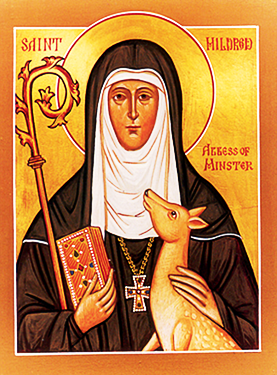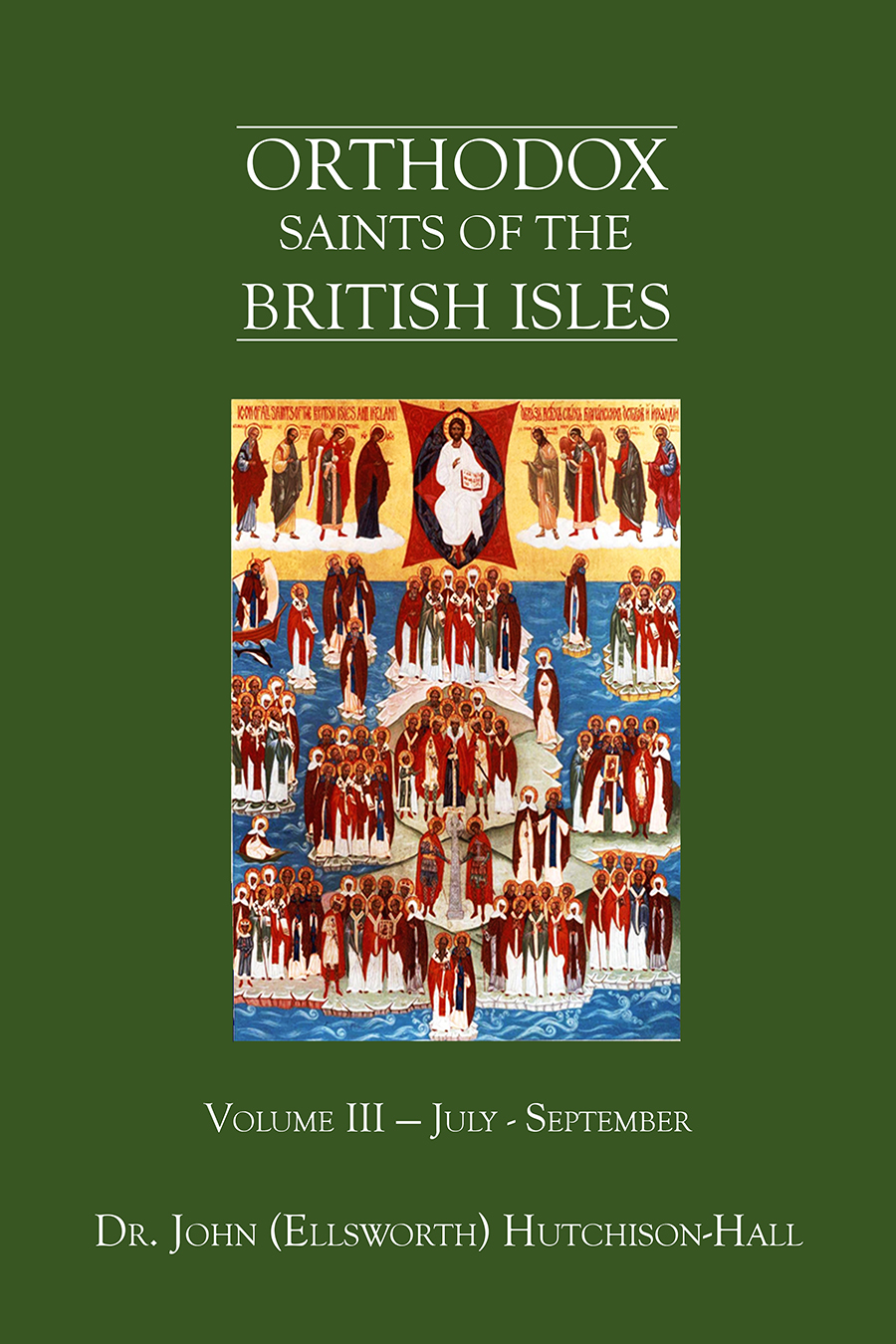
Orthodox Saints of the Pre-Schism
See of Rome
26th July (NS) — 13th July (OS) 2023
DOGFAN (DOEWAN), (Fifth Century), one of the sons of the great King St. Brychan of Brycheiniog (6th April), St. Dogfan is believed to have been martyred by pagan invaders in Dyfed (Pembrokeshire), Wales. A church was built there in his honour.
EUGENE, SALUTARIS, MURITTA, and COMPANIONS of CARTHAGE, Eugene was consecrated Bishop of Carthage (a present-day suburb of Tunis, Tunisia) in 481, and soon afterwards was exiled to the surrounding desert by the Arian Vandals along with either, the entirety of the clergy of all ranks of his diocese numbering in excess of 500, or, as other sources state, an unknown number of his flock, including children. Regardless of the make-up of his fellow exiles, all suffered greatly for the true faith. Permitted to return to Carthage in 488, St. Eugene was exiled again in 496, this time he managed to settle in Albi in south-eastern Italy. There St. Eugene reposed in 505 from the toll his mistreatments had taken upon him. St. Eugene and his flock are counted amongst the Martyrs of the Church due to their suffering.
MILDRITH (MILDRED) of THANET, The daughter of St. Ermenburgh (19th November) and sister of SS. Mildburg of Much Wenlock (23rd February) and Mildgyth (17th January), St. Mildrith was sent at an early age to be educated at Chelles Abbey near Paris in France. Returning to England, she received monastic tonsure from St. Theodore of Canterbury (19th September) at her mother’s monastery of Minster-in-Thanet, in Kent. St. Mildrith succeeded her mother as Abbess upon St. Ermenburg’s repose. As Abbess, St. Mildrith earned a reputation for patience, love, and kindness. Following a long illness, St. Mildrith reposed circa 700, and was succeeded by St. Eadburh of Minster (13th December). St. Mildrith was a popular saint in the years following her repose, and her local cultus eclipsed even St. Augustine of Canterbury (27th May). The bulk of St. Mildrith’s relics were translated to Canterbury in 1033, with some minor relics translated to Deventer in Holland where she was also venerated.
Troparion of St. Mildrith of Thanet — Tone IV
Through constant prayer and frequent fasting, by ceaseless hymnody
and great humility, the glorious Mildrith forsook the allurements of
her royal rank, trampling underfoot all worldly pride and
presumption. Wherefore, let us imitate her virtues, that, free from
all earthly attachments, we may join her at the wedding feast of
Christ our Saviour.
TURIAF (TURIAV, TURIAVUS) of DOL, a French nobleman who became a monk, priest and later Bishop of Dol in Brittany (north-western France). St. Turiaf reposed circa 750.
Get your copy of Orthodox Saints of the British Isles today.
Available at Amazon or your favourite e-bookstore.
BENIGNO (BÉNIGNE) of MALCESINE, (Late Eighth, Early Ninth Century), a little known hermit in Malcesine near Verona Italy. His cultus has been limited to the Malcesine area of which he shares the patronage of along with St. Charus (vide infra).
CHARUS (CARO) of MALCESINE, (Late Eighth, Early Ninth Century), St. Charus was a fellow hermit with St. Benigno (vide supra) in Malcesine of which he is co-patron saint along with St. Benigno. Nothing further that is verifiable is known, as their lives have been based exclusively on handed down tradition and pious legend.
GOTHALM, a monk at Melk, on the Danube in Lower Austria about 77 km (48 mi) west of Vienna, of whom little is known. He reposed in 1020 of natural causes, and unspecified miracles are said to have occurred at his tomb.
HYACINTH, (Date unknown), according to the Roman Martyrology, St. Hyacinth was martyred at some point during the reign of Emperor Trajan (r. 98–117). Whilst there is no doubt as to St. Hyacinth’s existence, the pre-eminent hagiographic scholars of the Société des Bollandistes (the Bollandists) have declared his Acts to be entirely unreliable.
PARASCEVA (VENERANDA) of ROME, whilst there are several variations, most of the Orthodox Churches (vide Patriarchate of Moscow, and Orthodox Church in America calendars) commemorate St. Parasceva today (26th July). However, she is more commonly commemorated as St. Veneranda on (14th November) (vide Roman Martyrology, the Monks of Ramsgate’s Book of the Saints, and others). To see her hagiographic entry go to 14th November.
PASTOR of ROME, a priest, and according to some sources the brother of Pope St. Pius I (11th July), who is remembered for his work with SS. Pudens of Rome (19th May), Praxedes of Rome (21st July), and Pudentiana of Rome (19th May) to enlighten pagans in Rome. St. Pastor reposed circa 160.
SIMEON of PADOLIRONE, an Armenian monk who, after living for a while in the Holy Land as a hermit, travelled across Italy, France, and Spain as a pilgrim, and becoming known as a wonderworker. Returning through northern Italy he settled at Padolirone Abbey in Mantua, mid-way between Milan and Padua (north-west Italy). St. Simeon reposed 1016, his tomb was the site of many miracles which led to him being declared a saint not long after his repose.
SYMPHSONIUS the SLAVE, OLYMPIUS the TRIBUNE, EXUPERIA the MARTYR, and THEODULUS the MARTYR, St. Symphronius, the slave of St. Nemesius a Deacon (25th August) along with St. Olympius, his wife St. Exuperia and their son St. Theodulud were all burned to death in 257 for their faith during the Valerian Persecution. Pope St. Stephen (2nd August), who had baptised all, or some of them, in the Catacombs, was martyred shortly afterwards.
VALENS of VERONA, the Bishop of Verona (northern Italy) from 524 until his repose 531. No further information on his life is extant.
Prior to the Schism the Patriarchate of Rome was Orthodox, and fully in communion with the Orthodox Church. As Saint John of Shanghai and San Francisco +1966 said “The West was Orthodox for a thousand years, and her venerable Liturgy is far older than any of her heresies”.
Details of British Saints excerpted from Orthodox Saints of the British Isles.
Details of continental saints from these sources.
In many cases there are several spelling versions of the names of saints from the British Isles. I use the Oxford Dictionary of National Biography version as the primary version with the more prevalent version in parenthesis e.g. Ceadda (Chad) of Lichfield.


